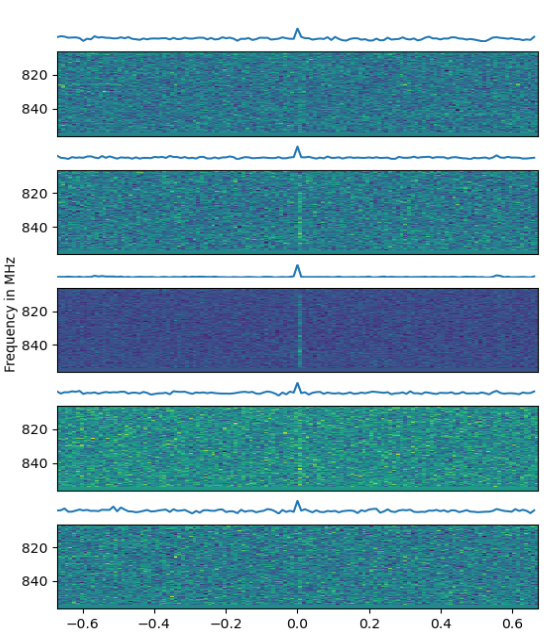UTMOST-2D has been running 24/7 for over a week, searching for FRBs and timing pulsars with the North-South arm of the Molonglo Radio Telescope. This is the culmination of over 3 years of design, construction, installation and commissioning by engineers and researchers at Swinburne University of Technology’s Centre for Astrophysics and Supercomputing and the Sydney Institute for Astronomy at the University of Sydney.
Full operations were made possible by Swinburne PhD student Ayushi Mandlik‘s work on machine-learning to recognise radio bursts in real time. Her work involved adding tens of thousands of mock FRBs as point sources on the sky at different locations within the Field-of-View while the telescope is live, saving these data, and using them to train a CNN (convolutional neural network) to recognise such events from random noise and terrestrial radio interference. She used the Swinburne University of Technology’s OzStar supercomputer to train UTMOST.
The pulse detector has already picked up thousands of single pulses from known pulsars in its first week of operations, a critical test of its functionality. It has also picked up pulses from an RRAT — a slow pulsar which emits pulses only very occasionally — this is an excellent test of its capacity to find FRBs.
The live FRB-detector makes use of spatial information by searching around the burst to check it has the characteristics of a distant point source, rather than a nearby interference signal such as caused by mobile phones or electrical machinery. This allows it to reject millions of “false positives” and sift down to the very best candidates each day.

Congrats Ayushi on this very significant achievement for her PhD work.
UTMOST-2D has been funded through generous grants from the Australian Research Council and the Mount Cuba Astronomical Foundation.